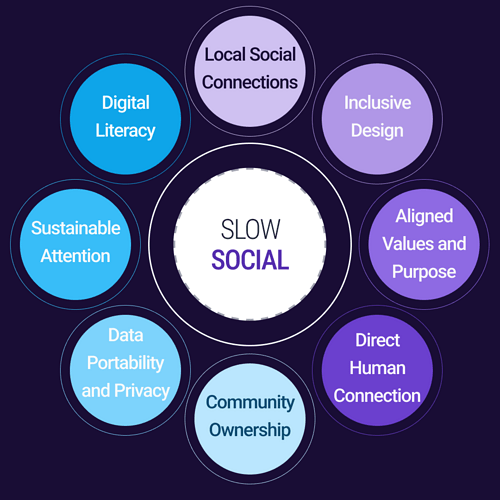In another topic I mentioned how “FOSS enables BOSS”, or how we set ourselves up for failure and helping Hypercapitalism, by being part of the same game. While we wield the Four Freedoms, we allow hypercapitalism to wield the Fifth Freedom: The Freedom To Corrupt.
Yet, it is hard to find better, more strategic ways to go about our work, without making concessions to our Principles and Values which are pillars to the new system we envision for the Commons.
Transparency is an example, where working in public is important for 2 major reasons:
- As pre-condition to foster high levels of Trust, which is yet another pillar of Free Culture.
- Because open information inspires others. Ideas must flow freely so cross-pollination happens.
In another strategy topic I already mentioned some Transparency Strategies to use, as Radical (real-time) Strategy is just not possible to use all the time (unless you are fine to position as a “loser”).
Strategic Social Networking
Adjacent to Transparency, in related areas, are aspects that affect Reach and Findability, Appeal and Attraction. This deals with strategic obfuscation of activities from malign hypercapitalist influence.
What is social networking? Well, first of all social. Here it differs from the Web at large, where you want to have easiest access to as much of the information you are interested in. On a social network you ideally limit your social graph to the people you want to hang out with. Those with whom you’d want to socialize, because you share common interests, but also principles and values (in most cases).
There’s a set ofpractices that can be followed to hone your social graph and make it uniquely personal:
- Create an account where you vet all follow requests.
- Either you accept people you already had interaction with.
- Or you vet their understanding of FOSS culture.
- In profile settings turn off all discovery features.
- Don’t advertise your profile in trending lists, “Who to follow”, etc.
- Moderate your account regularly and cherry-pick followers/following.
What is the result of this?
- You reach people you want to reach, but create frictions for information to reach where you don’t want it to reach.
- You do not need to make concessions to the levels of Transparency, or much less so.
- Your network becomes a natural attractor to the people you want to hang out with.
I feel there’s more to be explored here. Curious about thoughts…
